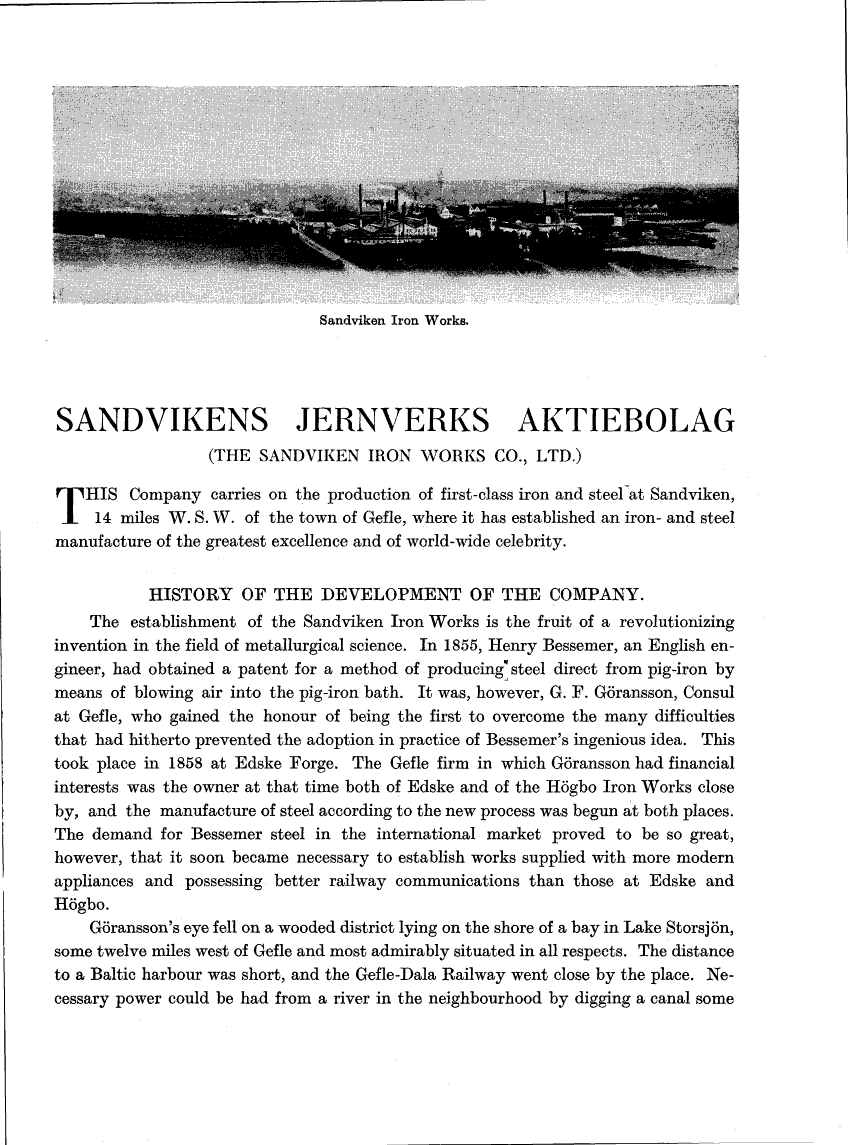
Full resolution (TIFF)
- On this page / på denna sida
- Sandvikens Jernverks Aktiebolag

<< prev. page << föreg. sida << >> nästa sida >> next page >>
Below is the raw OCR text
from the above scanned image.
Do you see an error? Proofread the page now!
Här nedan syns maskintolkade texten från faksimilbilden ovan.
Ser du något fel? Korrekturläs sidan nu!
This page has been proofread at least once.
(diff)
(history)
Denna sida har korrekturlästs minst en gång.
(skillnad)
(historik)
 |
| Sandviken Iron Works. |
SANDVIKENS JERNVERKS AKTIEBOLAG
(THE SANDVIKEN IRON WORKS CO., LTD.)
THIS Company carries on the production of first-class iron and steel at Sandviken,
14 miles W. S. W. of the town of Gefle, where it has established an iron- and steel
manufacture of the greatest excellence and of world-wide celebrity.
HISTORY OF THE DEVELOPMENT OF THE COMPANY.
The establishment of the Sandviken Iron Works is the fruit of a revolutionizing
invention in the field of metallurgical science. In 1855, Henry Bessemer, an English
engineer, had obtained a patent for a method of producing steel direct from pig-iron by
means of blowing air into the pig-iron bath. It was, however, G. F. Göransson, Consul
at Gefle, who gained the honour of being the first to overcome the many difficulties
that had hitherto prevented the adoption in practice of Bessemer’s ingenious idea. This
took place in 1858 at Edske Forge. The Gefle firm in which Göransson had financial
interests was the owner at that time both of Edske and of the Högbo Iron Works close
by, and the manufacture of steel according to the new process was begun at both places.
The demand for Bessemer steel in the international market proved to be so great,
however, that it soon became necessary to establish works supplied with more modern
appliances and possessing better railway communications than those at Edske and
Högbo.
Goransson’s eye fell on a wooded district lying on the shore of a bay in Lake Storsjön,
some twelve miles west of Gefle and most admirably situated in all respects. The distance
to a Baltic harbour was short, and the Gefle-Dala Railway went close by the place.
Necessary power could be had from a river in the neighbourhood by digging a canal some
<< prev. page << föreg. sida << >> nästa sida >> next page >>
Project Runeberg, Mon Dec 11 21:48:46 2023
(aronsson)
(diff)
(history)
(download)
<< Previous
Next >>
https://runeberg.org/steelswe/0143.html




